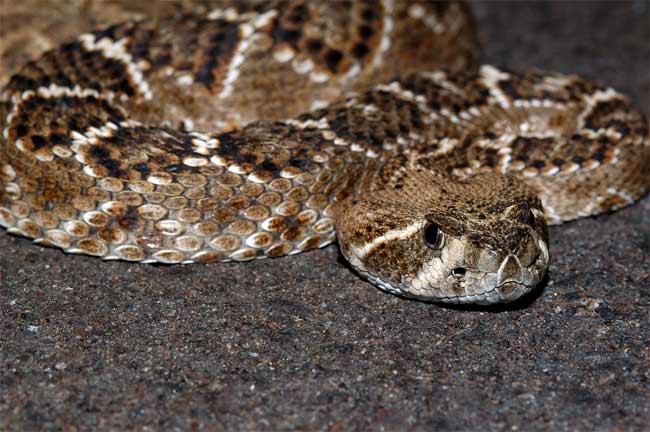How Snakes Survive Months Without Food

Snakes can lower their metabolic rates by up to 70 percent, allowing them to survive prolonged periods without food while growing longer nonetheless, a new study shows.
“These animals take energy reduction to a whole new level,” said lead author Marshall McCue, a biology graduate student at the University of Arkansas.
The research, detailed in the September issue of the journal Zoology, is an extension of McCue's past studies that revealed biochemical changes in the western diamondback rattlesnake.
McCue withheld food from 62 snakes belonging to one of three different species (rat snake, western diamondback rattlesnake and ball python) for about six months and observed their metabolic rates. It is typical for snakes in the wild to go without food for this long. He found that snakes reduced their standard metabolic rates, some by up to 72 percent.
“Snakes already had low energy demands. We didn’t know they could go lower,” McCue said.
Despite the lack of food, the snakes continued to grow in length. “To me, this suggests that there must be a strong selective advantage to growing longer,” McCue said. He added evolution has led to snakes that are extremely efficient at frugal use of available resources which come from within their own bodies.
During the first stages of starvation, all the snakes burned up selected fat stores. The next energy source to go differed among the snake species. The ratsnakes, which live in an environment with abundant rodent prey, began to break down proteins faster than the pythons or rattlesnakes.
Get the world’s most fascinating discoveries delivered straight to your inbox.
“The protein use was higher in the snakes less well-adapted to starvation,” McCue said.
Understanding how snakes can succeed in food-scarce environments will add to the overall picture of snakes' evolution.
- VIDEO: How a Snake Swallows a Larger Snake
- IMAGE GALLERY: Snakes of the World
- Top 10 Amazing Animal Abilities
Jeanna Bryner is managing editor of Scientific American. Previously she was editor in chief of Live Science and, prior to that, an editor at Scholastic's Science World magazine. Bryner has an English degree from Salisbury University, a master's degree in biogeochemistry and environmental sciences from the University of Maryland and a graduate science journalism degree from New York University. She has worked as a biologist in Florida, where she monitored wetlands and did field surveys for endangered species, including the gorgeous Florida Scrub Jay. She also received an ocean sciences journalism fellowship from the Woods Hole Oceanographic Institution. She is a firm believer that science is for everyone and that just about everything can be viewed through the lens of science.


